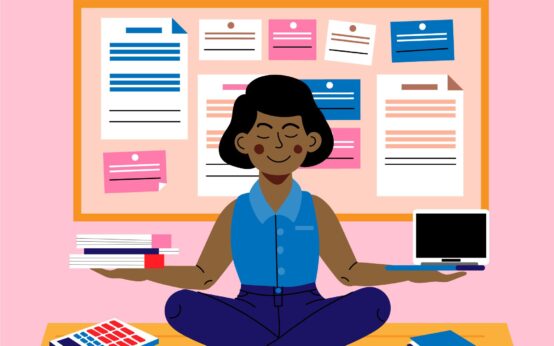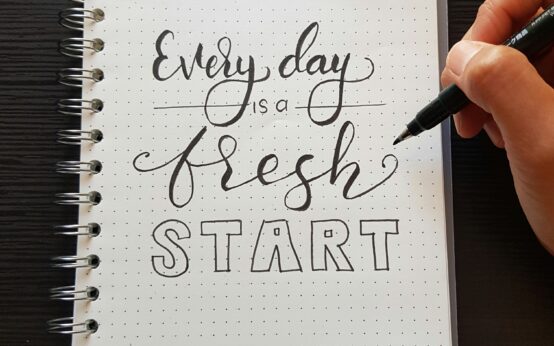Have you ever found yourself in a situation where everything seems overwhelming, and all you wish for is a moment of peace amidst the chaos? Breathing exercises can be your go-to solution in such moments, guiding you back to a state of mindfulness and tranquility. These simple practices have the power to transform your mental landscape, helping you focus, relax, and center yourself.

Understanding Mindfulness
Mindfulness is a mental state achieved by focusing your awareness on the present moment, while calmly acknowledging and accepting your feelings, thoughts, and bodily sensations. It’s about living in the moment and being fully engaged with what you’re doing, without judgment or distraction. In today’s fast-paced world, cultivating mindfulness can be a valuable tool for improving mental clarity, reducing stress, and enhancing your overall well-being.
The Connection Between Breathing and Mindfulness
Breathing is a straightforward yet powerful method to anchor your attention and bring you back to the present moment. Our breath is always with us, and by paying attention to it, we can create moments of mindful awareness even in the busiest of days. When you practice mindful breathing, you use the rhythm and flow of your breath to bring stability and focus to your mind.
How Does Breathing Influence Mindfulness?
Breathing exercises affect mindfulness by regulating your heart rate and blood pressure, calming your nervous system, and reducing anxiety. As you focus on your breath, it becomes a conduit for mindfulness, allowing you to move beyond mental clutter. This reduces the distractions of wandering thoughts and helps you remain present, contributing to a state of mental equilibrium and calm.
Preparing for Breathing Exercises
Before you start your breathing exercises, it’s essential to create an environment conducive to mindfulness. Choose a quiet, comfortable space where you won’t be disturbed. You might also want to sit or lie in a relaxed position, ensuring your body feels supported and at ease.
Setting the Scene
- Find a Comfortable Position: Whether sitting in a chair or lying on a yoga mat, ensure your back is straight. This posture helps maintain open airways for optimal breathing.
- Control Your Environment: Soft lighting and a comfortable temperature can enhance your ability to concentrate and relax.
- Time and Space: Allocate specific times of the day for mindfulness practice, creating a routine that signals your mind and body that it’s time to focus on breathing.
The Most Effective Breathing Exercises for Mindfulness
Let’s explore various breathing techniques that can enhance your mindfulness practice. Each exercise offers unique benefits, so you can try different ones to identify what works best for you.
1. Deep Breathing
Deep breathing is a foundational technique in mindfulness. It involves taking slow, deep breaths that fully fill and empty your lungs, supporting your body’s relaxation response.
- How to Practice:
- Start by inhaling slowly through your nose.
- Allow your abdomen to rise as your lungs fill with air.
- Exhale slowly through your mouth, letting go of any tension.
Benefits: Deep breathing slows your heart rate, lowers blood pressure, and helps you feel more connected to your body.
2. Diaphragmatic Breathing
Also known as belly breathing, this exercise engages your diaphragm, encouraging full oxygen exchange and stabilizing your emotions.
- Steps:
- Place one hand on your chest and the other on your abdomen.
- Inhale deeply through your nose, allowing your belly to rise more than your chest.
- Exhale slowly, noticing how your abdomen relaxes.
Benefits: Diaphragmatic breathing increases lung efficiency and reduces stress levels by activating your parasympathetic nervous system.
3. Box Breathing
Box breathing, or square breathing, provides structure to your breathing, enhancing concentration and relaxation.
- Technique:
- Inhale for a count of four.
- Hold your breath for four counts.
- Exhale for four counts.
- Hold again for four counts before inhaling.
Benefits: This technique is beneficial for stress management and helps clear your mind, making decision-making and problem-solving easier.
4. 4-7-8 Breathing
This exercise is useful for falling asleep and reducing anxiety levels.
- Procedure:
- Inhale quietly through your nose for four seconds.
- Hold your breath for seven seconds.
- Exhale completely through your mouth for eight seconds.
Benefits: The 4-7-8 method soothes your nervous system, making it easier for your body to relax and drift into sleep.
5. Alternate Nostril Breathing
This technique balances the flow of energy through your body, promoting a sense of equilibrium.
- Steps:
- Use your right thumb to close your right nostril.
- Inhale through your left nostril.
- Close your left nostril with your ring finger and release your right nostril.
- Exhale through the right nostril.
- This can be repeated by inhaling through the right nostril next.
Benefits: Alternate nostril breathing helps improve cardiovascular function and lowers heart rate. It also brings about emotional stability by unifying the right and left sides of the brain.
6. Mindful Breathing
Mindful breathing uses self-awareness to observe the natural flow of your breath without manipulation.
- How to Do It:
- Sit in a comfortable position, closing your eyes if you wish.
- Breathe naturally and focus on the sensation of the breath entering and leaving your nostrils.
- Acknowledge your thoughts as they arise, then gently let them go, returning your focus to your breath.
Benefits: This exercise cultivates mindfulness by improving focus and concentration, and it encourages acceptance and non-judgment.

Table: Quick Reference Guide for Breathing Exercises
| Exercise | Main Benefit | Instructions Summary |
|---|---|---|
| Deep Breathing | Relaxation, connection to body | Inhale slowly through nose, exhale through mouth |
| Diaphragmatic Breathing | Lung efficiency, stress reduction | Inhale deeply with abdomen rise, exhale slowly |
| Box Breathing | Stress management, focus improvement | Inhale, hold, exhale, hold, each for four counts |
| 4-7-8 Breathing | Nervous system calming, sleep improvement | Inhale for 4, hold for 7, exhale for 8 |
| Alternate Nostril Breathing | Energy balance, emotional stability | Inhale and exhale through alternate nostrils |
| Mindful Breathing | Focus, concentration, acceptance | Observe natural breath, acknowledge and release thoughts |
Practicing Mindfulness with Breathing Exercises
Incorporating these exercises into your daily routine can significantly enhance your mindfulness practice. Start by choosing one or two techniques that resonate with you, then practice them consistently.
Consistency Is Key
Just like any other skill, mastering mindfulness through breathing exercises takes time and regular practice. You might begin by dedicating a few minutes a day and gradually increase as you grow more comfortable with the practice. The goal is to integrate these exercises into your lifestyle and reap the long-term benefits of improved mental health and well-being.
Listening to Your Body
As you practice, pay attention to how your body and mind respond to different exercises. Some might suit you well on certain days more than others, depending on your mood or energy levels. It’s essential to be adaptable and kind to yourself as you progress.

Benefits of Breathing Exercises Beyond Mindfulness
The advantages of practicing breathing exercises extend beyond mindfulness. Regular practice can improve physical health, emotional resilience, and your ability to cope with life’s challenges.
Physical Health Benefits
- Increases lung capacity and efficiency.
- Enhances oxygen supply to the brain, improving cognitive function.
- Stabilizes heart rate and lowers blood pressure.
- Strengthens the respiratory muscles.
Emotional and Mental Health Benefits
- Reduces anxiety and stress levels.
- Improves mood and emotional regulation.
- Enhances focus and concentration.
- Promotes feelings of calmness and relaxation.
Conclusion
Breathing exercises serve as a powerful tool for cultivating mindfulness, offering a pathway to a healthier, more balanced life. By incorporating these techniques into your daily routine, you can enhance your ability to remain present, reduce stress, and improve overall well-being. So, take a deep breath, and let the natural rhythm of inhaling and exhaling guide you to a state of mindfulness and peace.

 10 Simple Self-Care Practices For Stress Relief
10 Simple Self-Care Practices For Stress Relief  How To Create A Mindfulness Routine For Beginners
How To Create A Mindfulness Routine For Beginners  How To Incorporate Self Care Into Your Daily Life
How To Incorporate Self Care Into Your Daily Life  The Best Mindfulness Apps To Enhance Your Practice
The Best Mindfulness Apps To Enhance Your Practice  The Ultimate Self-Care Checklist for Better Mental Health
The Ultimate Self-Care Checklist for Better Mental Health  Easy Self Care Ideas You Can Do at Home
Easy Self Care Ideas You Can Do at Home  How To Create A Skincare Routine For Oily Skin
How To Create A Skincare Routine For Oily Skin  The Best Ingredients For Anti-Aging Skincare
The Best Ingredients For Anti-Aging Skincare  Skincare Myths That Are Wrecking Your Glow
Skincare Myths That Are Wrecking Your Glow  Natural Skincare 101: Everything you Need to Know
Natural Skincare 101: Everything you Need to Know  The Ultimate Guide To Sunscreen: What You Need To Know
The Ultimate Guide To Sunscreen: What You Need To Know  Guide to the Best Anti acne Products for Clear Skin
Guide to the Best Anti acne Products for Clear Skin